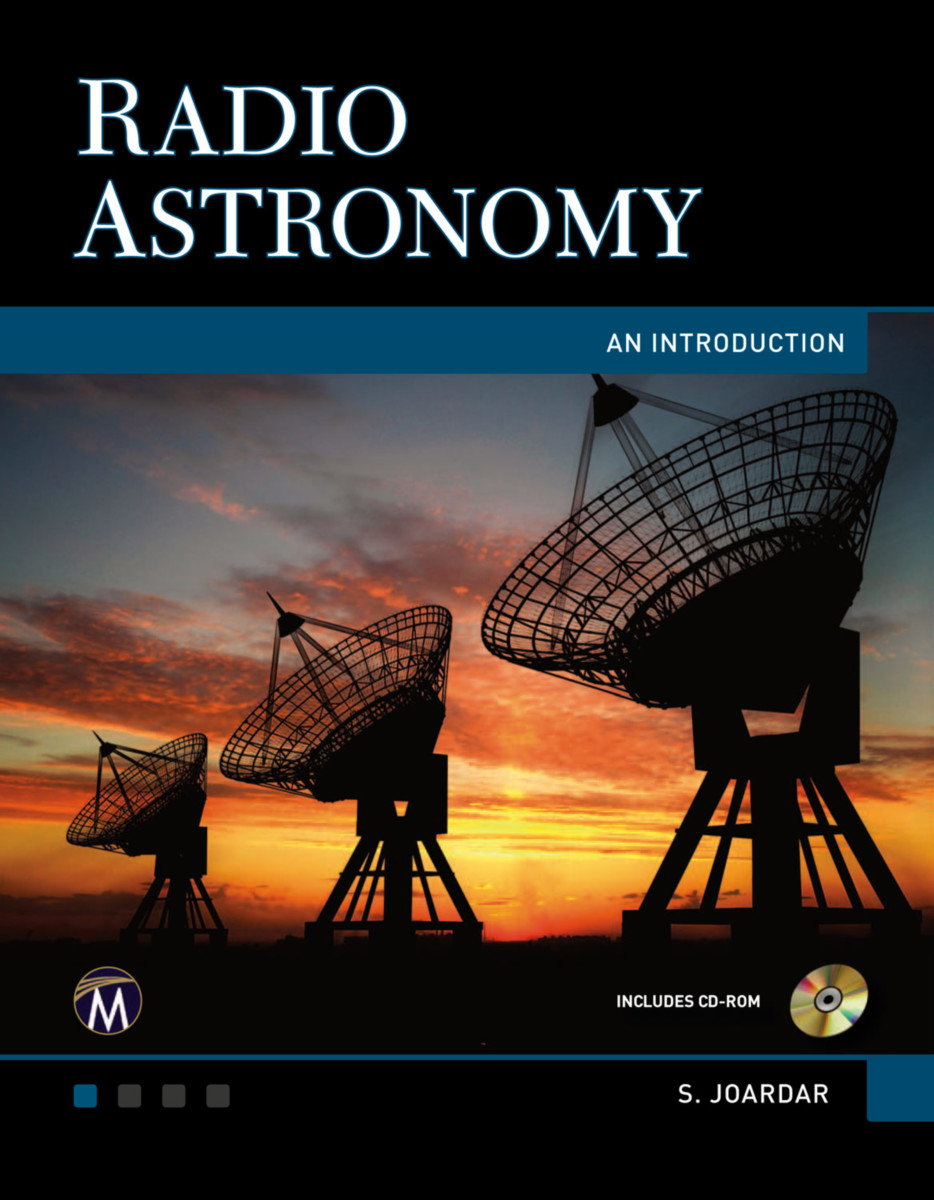Radio Astronomy
An Introduction
- Publisher
Mercury Learning and Information - Published
8th July 2015 - ISBN 9781936420353
- Language English
- Pages 500 pp.
- Size 7" x 9"
- Images color illus
- Request Exam Copy
Library E-Books
We are signed up with aggregators who resell networkable e-book editions of our titles to academic libraries. These editions, priced at par with simultaneous hardcover editions of our titles, are not available direct from Stylus.
These aggregators offer a variety of plans to libraries, such as simultaneous access by multiple library patrons, and access to portions of titles at a fraction of list price under what is commonly referred to as a "patron-driven demand" model.
- Publisher
Mercury Learning and Information - Published
22nd June 2015 - ISBN 9781937585617
- Language English
- Pages 500 pp.
- Size 7" x 9"
- Images color illus
E-books are now distributed via VitalSource
VitalSource offer a more seamless way to access the ebook, and add some great new features including text-to-voice. You own your ebook for life, it is simply hosted on the vendor website, working much like Kindle and Nook. Click here to see more detailed information on this process.
- Publisher
Mercury Learning and Information - Published
15th May 2015 - ISBN 9781937585624
- Language English
- Pages 500 pp.
- Size 7" x 9"
- Images color illus
- Request E-Exam Copy
Designed for a course in radio astronomy or for use as a reference for practicing engineers and astronomers, this book provides a comprehensive overview of the topic. Application boxes in each chapter cover topics like LOFAR, DSN, and VLBI. The book begins with the history of radio astronomy, then explains the fundamentals, polarization, designing radio telescopes, understanding radio arrays, interferometers, receiving systems, mapping techniques, image processing and propagation effects in relation to radio astronomy. A special chapter in the end presents the GMRT radio array as an example of the explained techniques.
Features:
•Includes context-connection boxes, including NASA’s Deep Space Network (DSN) the South Pole Telescope (SPT), the Low-Frequency Array (LOFAR), Space Very Long Baseline Interferometry (VLBI), pulsar dispersion and distance, and plane waves in conducting and dielectric media
•Contains several appendices including radiation potential formalism, the physics of radio spectral lines, and
a table of world radio observatories
•View the comprehensive companion disc with hundreds of color images and figures from the text
1. Foundations of Radio Astronomy.
2. Fundamentals of Radio Astronomy.
3. Polarization Analysis.
4. Designing Single Dishes and Phased Arrays.
5. Interferometry and Radio Arrays.
6. Receiving Systems.
7. Interferometer Aperture Synthesis and Radio Mapping.
8. Interferometer Data Calibration and Image Processing.
9. Propagation Effects in Radio Astronomy.
10. The GMRT Radio Array.
A. Coordinate Systems Used in Radio Astronomy.
B. Antenna Terminology for Radio Telescopes.
C. Radiation Potential Formulation.
D. Radio Spectral Lines.
E. Radio Telescopes.
Bibliography.
Index.
Shubhendu Joardar
Shubhendu Joardar is the senior engineer and scientific officer at the Tata Institute of Fundamental Research. He is a fellow of the Institute of the Electronics and Telecommunication Engineers and his major field of work has been in microwaves, antennas, astronomical radio spectrographs, RFI instrumentations, and data analysis for radio astronomy.
J. R. Claycomb
J. R. Claycomb is Associate Professor of Physics at Houston Baptist University.


